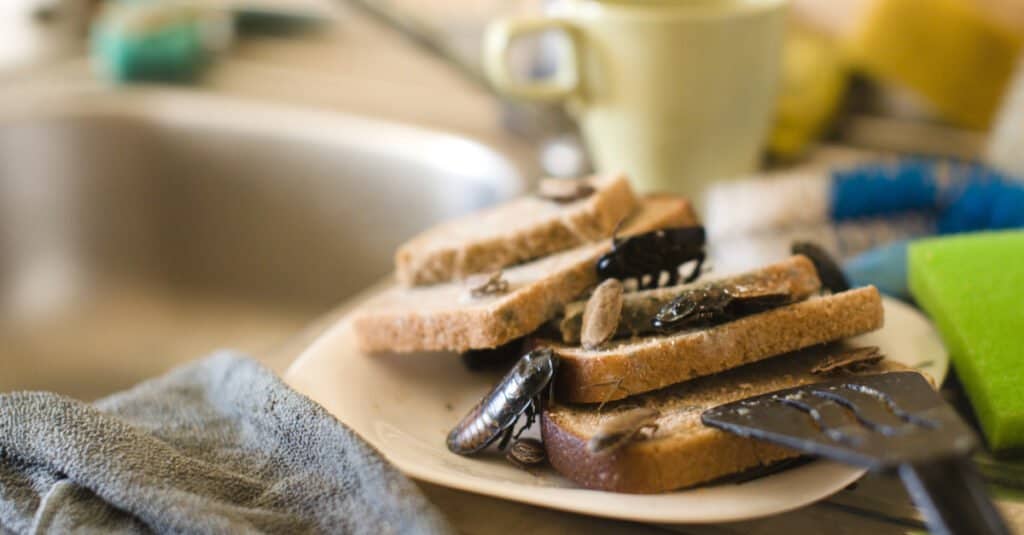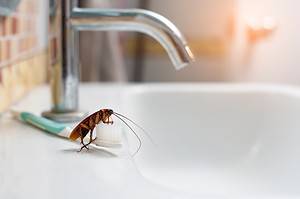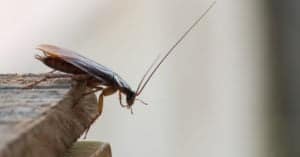Cockroaches are known far and wide as infestors of homes and spreaders of pathogens and disease. Most don’t come into our homes though; instead, they prefer to live outdoors. Roaches hide under leaf litter, and in the dark parts of homes. If it weren’t for the over 4,500 species of cockroaches around the world, we would live in a much dirtier place.
That’s not the case though when cockroaches come into the home. Of the thousands of species of roach, less than 30 are known to be pestilential to humans. Unfortunately, these species cannot live in harmony with humans, as their occupancy spreads disease, and may cause asthma and food-poisoning-like symptoms in people. They can be especially dangerous to children and immune-compromised people.
Here, we’ll take a closer look at just how to tell if you have a cockroach problem. Then, we’ll go over the top five areas to look for roaches. Finally, we’ll discover how to lure hidden cockroaches out of their hiding places, and eliminate infestations.
Signs of a Cockroach Infestation
Often, the first hint of a problem is the sight of one, or several, roaches. They tend to come out at night, and most scatter when you turn the lights on. They’re often mistaken for other bugs, like beetles, water bugs, and bed bugs. Besides the presence of adult roaches, other signs of an infestation include: baby cockroaches, cockroach poop, shed exoskeletons, cockroach egg cases, and bad odors and stains.
5 Common Cockroach Hiding Places
If you suspect there are roaches hiding in your home, the biggest things to remember are that cockroaches love dark, warm, damp places. They’ll congregate near easy sources of food and water, like the kitchen, or bathroom. Whether you’re in a third-story apartment or a home with a basement, cockroaches will find a place to stay. Different species occupy different types of homes; German cockroaches are most often found in multi-unit apartment complexes, while American cockroaches are usually found in homes.

Roaches hide in warm, damp, dark areas; cluttered rooms and damp under-the-sink cabinets are their favorites
©iordani/Shutterstock.com
1. Near Plumbing Fixtures
Many cockroaches use sewage and plumbing lines to infiltrate homes. This means they tend to cluster around places like under-the-sink cabinets and toilets. This is particularly true if the water pipes are not snugly fitted to the surrounding walls; cockroaches can squeeze themselves through even the tiniest of gaps. It’s important to fill any gaps around your plumbing pipes, and ensure that you have no leaks. Cockroaches love damp places, and leaky pipes create the perfect environment.
2. Storage Rooms
During the daytime, cockroaches don’t like to be disturbed. This means that, if you have an area of the house, like a basement or storage area, that doesn’t get used much, but has a lot of stuff in it, you’ve created a perfect hiding place for roaches. In particular, cockroaches love corrugated cardboard; they use it both as shelter and as food. To reduce potential cockroach breeding grounds, clear as much clutter as you can, and store items in plastic totes, rather than cardboard boxes.
3. Cracks and Crevices
Just like rats, cockroaches can squeeze their bodies into spaces much smaller than their own bodies. This is particularly true when cockroaches infiltrate homes and businesses; they can enter a home through a crack less than ¼ inch wide.
To prevent roaches from getting into your home, be sure to plug up any cracks in the walls or floors. Cockroaches are particularly fond of the space where the wall meets the floor, as this is a commonplace to find cracks. Crevices in flooring, and even in ceilings, can provide cockroach highways as well.
4. Electronic Appliances
Cockroaches like warmth; they’re particularly keen on hiding in and around running electrical appliances, which generate a comfortable amount of warmth. This is especially true of the brown-banded cockroach. This species prefers living in environments that are at least 80 degrees Fahrenheit. Brown-banded roaches, along with other species, are frequent infestors of the spaces underneath refrigerators and on the ground appliances.
Additionally, female brown-banded cockroaches prefer attaching their egg cases to electrical appliances. So, when you’re cleaning out signs of infestation, be sure to check the undersides and backs of these devices for egg cases or larvae.
5. Furniture

Roaches hide in and under furniture, and lay their eggs inside furniture and mattresses
©Elnur/Shutterstock.com
Perhaps one of the most repulsive places roaches hide is inside furniture. Cockroaches aren’t particular when it comes to hard vs soft surfaces; they like it all. If the furniture is near sources of food and water, like the kitchen, roaches may make use of it. This goes for bedrooms as well; cockroaches have been known to infest ripped mattresses and stored bedding.
One of the signs of a cockroach infestation is the presence of egg cases hidden inside mattresses or piles of bedding or clothing. To prevent this, it’s important to repair any tears in your mattress. You should also keep any bedding or extra items stored in clean, dry places; if possible, store them in plastic totes. Not only do cockroaches love bedding and furniture, they also love cardboard, and will both eat, and hide in, corrugated cardboard boxes.
How To Lure Roaches Out of Hiding
When it comes to luring cockroaches out of hiding, there are many folk methods. But, just because you can’t see the roach hiding when you set out the trap, doesn’t mean it won’t be drawn to it when the lights go out.
To lure roaches out of hiding, lay baited traps in areas that cockroaches frequent. These include the bases of walls, underneath sinks, beneath furniture, behind electrical appliances, and anywhere else you’ve seen cockroaches. They will naturally come to the source of food, become stuck in the trap, and die.
Once you’ve used the glue traps to establish where your worst cockroach problem is, you can spray that area with commercially available pesticides. If you do decide to use traps and pesticides, rather than calling in a professional, be sure to use extreme caution. Roach traps and pesticides are toxic to humans and pets.
The photo featured at the top of this post is © Elnur/Shutterstock.com
Thank you for reading! Have some feedback for us? Contact the AZ Animals editorial team.






